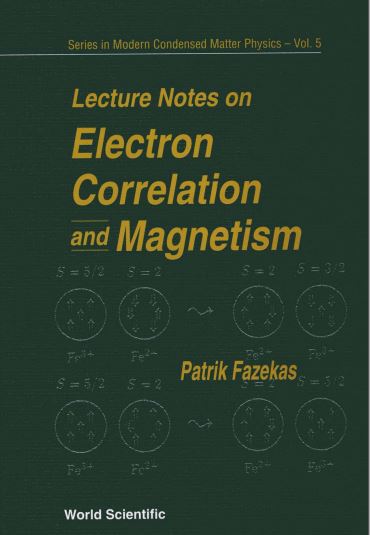Special Topics in Condensed Matter Physics (PHYS562)

Course Materials: Syllabus
Course textbook:
P. Fazekas: Lecture Notes on Electron Correlation and Magnetism, World
Scientific, (1999)
F. H. L. Essler, H. Frahm, F. Göhmann, A. Klümper, and V. E. Korepin: The One-Dimensional Hubbard Model, Cambridge (2005)
V. E. Korepin, N. M. Bogoliubov, and A. N. Izergin: Quantum Inverse Scattering Method and Correlation Functions, Cambridge Monographs on Mathematical Physics, (1997)
Lecture Notes:
Lecture 1 (Introduction: how strongly correlated models arise)
Lecture 2 & 3 (Atoms, ions, molecules under a magnetic field)
Lecture 4 (Crystal field theory)
Lecture 5 (Crystal field theory)
Lecture 6 (Exact solution for a magnetic model)/b>
Lecture 7 (Exact solution for a magnetic model)
Lecture 8 (Hubbard model, basics)
Lecture 9 (Symmetries of the Hubbard model)
Lecture 10 & 11 (Hubbard subbands, large U limit)
Lecture 12 (large U limit, Heisenberg and t-J models)
Lecture 13 (literature list for Monte Carlo methods)
Lecture 14 (superexchange, extended Hubbard, orbital order)
Lecture 15 (Hubbard model, exact solution, two-particle example)
Lecture 16 (Berry phase, polarization)
Lecture 17 (Modern theory of polarization)
< Lecture 18 (Integer quantum Hall effect)
Lecture 19 (Topological band theory, Haldane model)
Lecture 20 (Topological insulators in two dimensions, Kane-Mele model)
Problem Sets
Solution to quizzes 1, 2, and 3